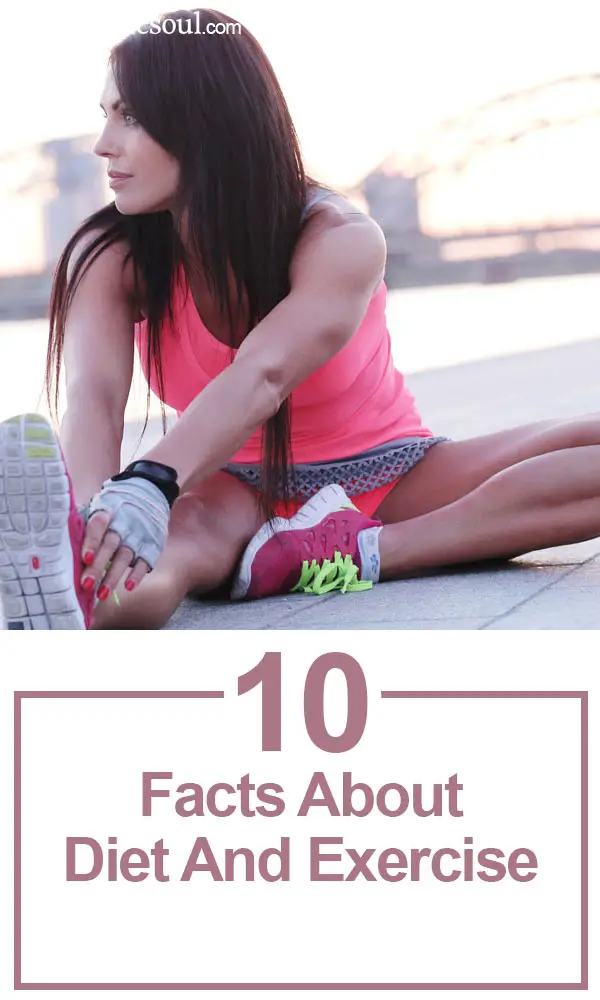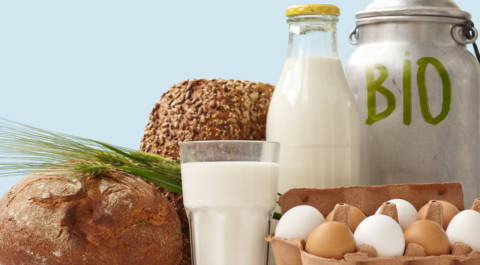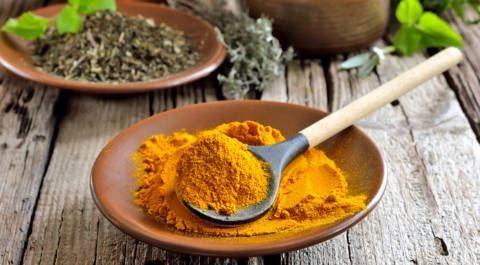
Is it better to eat before or after exercising? Should certain people stay away from weightlifting? Does 2% milk really only contain 2% fat? Which is better, strength or endurance? These questions and more surround daily diet and exercise. Some are easy to answer, but others are trickier.
Like Organic Soul on Facebook
Number 1. No matter the duration, you’re always burning fat
While some people think there is a magic number associated with fat burning, the truth is that you’re always burning fat no matter the intensity or duration. As you increase these two variables, the fat burning will rise; however, our bodies will always be burning fat regardless.
You can still optimize fuel utilization though. In fact, with the proper exercise regimen, you can train your body to focus on fat burning!
Number 2. Aerobic Exercise Strengthens the Heart
The more you exercise a muscle, the stronger it will become, and the heart is no different. When you perform an exercise involving thousands of repetitions, the hearts is put under enormous stress (also referred to as “overload”). This results in a strong, well-fit heart. This actually makes your heart larger and increases overall ventricle size. This also results in a lower resting heart rate because your heart pumps so efficiently with a high stroke volume. For good cardiovascular health, aerobic exercise truly is a fantastic endeavor.
Number 3. You should be Skeptical of Labeling
“No cholesterol” doesn’t always mean “no cholesterol”, 2% milk is not made up of only 2% fat, and simply because it says it contains 0 grams trans fat, doesn’t mean it really does. Through clever math with the serving size, companies are allowed to omit ingredients on the nutritional table. Likewise, the framing of products are presented in such a way that they incite consumers to make wrongful inferences.
2% milk, for example, refers to 2% fat percentage based on food weight. Here’s the math: 120 kcal/cup, 5 g fat (which has 9 kcal/g/fat) = 45 kcal/fat. 120 kcal divided by 45 kcal/fat = 37 percent!
Number 4. Eating before exercise is less optimal
Based on the chemical reactions of ingesting food, when you eat prior to exercise, you adversely affect your body’s fat burning during exercise. While you continue to burn energy, it will primarily be carbohydrates. Essentially, when ingesting carbs, your body releases insulin, which inhibits hormone sensitive lipase, and in turning promoting fat storage rather than fat use. Unfortunately, this is true even 1-2 hours prior to exercise.
Caution: If you are not used to exercising on an empty stomach, you may experience medical problems and even feint. That said, make a gradual transition and be safe!
Number 5. More Veggies, Less Meat
By far, we are consuming too much meat and animal products in our diet. Today, average Americans get 30-35 percent of their daily calories from fat. While fat is a powerful energy source, abundance of it is correlated with cardiovascular disease, type two diabetes, and hypertension. According to the USDA, in 2000, Americans consumed an average 57 pounds more meat than they did annually in the 1950s, and a third fewer eggs. While this abundance of food is great, we need to be sure our diets are well-rounded.
Try skipping meat 1-2 nights of the week. This will help keep your fat intake down as well as keep demand down for an unsustainable practice.
Number 6. Both women and children should be encouraged to lift weights
Under the right supervision, weight lifting can be beneficial for everyone. Of course, peoples’ goals may be different, but physiologically speaking, the muscles are the same. Like aerobic exercise, the fibers in the body will strengthen. This will help keep you healthy and feeling great. Getting a weight set can be beneficial for the whole family!
Number 7. Stretching is Beneficial, but May Not Reduce Injury Risk
Stretching can reduce tension, increase flexibility, better your circulation, and help aid your muscle coordination. However, stretching also has a poor statistical background in risk-prevention. According to military research, those who stretched before training were “2.2- and 2.5-times more likely to incur an injury than trainees with average flexibility.”
If you don’t find yourself doing intense physical exercise, however, it is still useful for the occasional shock to muscles and tendons. Some say it may make more sense to limber up – with rapid, full body movements – rather than stretch in position for an extended period. Just remember not to go overboard. You don’t want to end up stiffer than before because of a pull!
Number 8. There is no “best” exercise
One important thing to keep in mind when exercising is that everyone has different goals, and, more importantly, have different bodies. Genetically, our muscle types and fiber proportions are already determined. Furthermore, depending on if you exercise for minimal fitness or because it’s your 9-5, you’ll want to further individualize your routine.
Number 9. Vitamins – Useful, but not Essential
Ideally, a well-rounded diet with healthy levels of fruits, veggies, meats, and cheeses will cover all your bases when it comes to nutrition. That’s not to say vitamins aren’t useful though. Many people have deficiencies in things like Iron and Omega-3. If you aren’t able to cover the problem through natural nutrition, vitamins can be a great help.
Number 10. Strength and Aerobics aren’t always Compatible
Depending on your goals, you may want a specific result. Because of this, you should always identify the area of the body you want to work on. While strength training (low rep, heavy weight) is great for building power, aerobic exercise (high rep, low weight) tends to detract from the strength gain eventually. For someone just beginning, however, a combination may be attractive because your body will benefits in both areas greatly.













